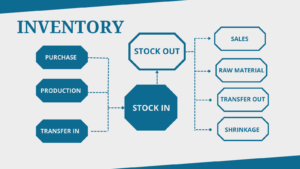In my extensive experience navigating the complex terrain of inventory management, I’ve found two methodologies particularly effective for different business scenarios: First-Expired, First-Out (FEFO) and First-In, First-Out (FIFO).
These strategies have been instrumental in my efforts to minimize waste, maximize efficiency, and ensure the delivery of high-quality products to consumers. Through this blog, I’ll share my deep dive into the intricacies of both the FEFO and FIFO methods, drawing from my hands-on applications, the advantages
I’ve observed, and my analysis of how they compare. My journey with these methodologies has not only honed my inventory management skills but also allowed me to guide businesses toward optimizing their operations for better outcomes.
This blog delves into the intricacies of the FEFO and FIFO methods, their applications, advantages, and how they compare.
What is FEFO?
FEFO, or First-Expired, First-Out, is an inventory management technique primarily used in industries where products have a limited shelf life, such as pharmaceuticals, food, and cosmetics. This method prioritizes the dispatch of goods based on their expiration dates, ensuring that items closest to expiring are sold or used first. The primary goal of FEFO is to reduce waste by minimizing the chances of products expiring before they are used or sold.
What is FIFO?
FIFO, or First-In, First-Out, is another crucial inventory management strategy, applicable across various industries. It operates on the principle that the first items to enter the inventory are the first to be sold or used. FIFO is particularly effective in non-perishable goods industries, helping businesses manage their inventory by keeping older stock moving and reducing the risk of obsolescence.
FEFO vs. FIFO: Key Differences
- Application Areas: FEFO is essential in industries dealing with perishable goods or items with expiration dates, focusing on product quality and safety. In contrast, FIFO is versatile, applicable to both perishable and non-perishable goods, emphasizing chronological stock rotation.
- Objective: The primary objective of FEFO is to minimize waste and ensure product safety, while FIFO aims to maintain inventory accuracy and reduce the risk of obsolete stock.
- Impact on Inventory: FEFO requires meticulous tracking of expiration dates, demanding more sophisticated inventory management systems. FIFO, being more straightforward, focuses on the order of stock received and sold.
Advantages of FEFO
- Reduced Waste: By ensuring that products nearing their expiration are sold or used first, FEFO significantly reduces waste.
- Enhanced Product Safety: This method guarantees that customers receive products well within their usability period, enhancing safety and satisfaction.
- Compliance: For industries regulated by strict standards, FEFO helps businesses comply with safety and quality regulations.
Advantages of FIFO
- Simplified Stock Management: FIFO’s straightforward approach makes it easier to manage stock rotation and maintain organized inventory records.
- Cost Efficiency: It helps in accurate cost accounting by aligning with the natural flow of goods, potentially reducing tax liabilities.
- Reduced Obsolescence: FIFO minimizes the risk of having obsolete products in the inventory, especially in fast-moving consumer goods (FMCG) and technology sectors.
Choosing Between FEFO and FIFO
The choice between FEFO and FIFO depends on several factors, including the nature of the products, regulatory requirements, and business objectives. FEFO is indispensable for businesses prioritizing product freshness and compliance with health standards. Conversely, FIFO is suitable for operations where product expiration is less of a concern, focusing instead on inventory efficiency and cost management.
Implementing FEFO and FIFO
Successful implementation of either method requires an effective inventory management system capable of tracking product dates for FEFO or inventory arrival dates for FIFO. Many modern ERP (Enterprise Resource Planning) and WMS (Warehouse Management System) solutions offer functionalities tailored to support these methodologies, providing real-time visibility and control over stock levels.
Optimizing Inventory: FIFO vs. FEFO in Jewellery Management Software
In my years working with jewelry businesses, I’ve seen firsthand how choosing the right inventory strategy can make a big difference. Using jewellery software with FIFO (First-In, First-Out) means selling older items first. This keeps your stock fresh and matches well with how the value of materials like gold and gems tends to go up over time, which can boost your profits. Although FEFO (First-Expired, First-Out) isn’t as common in jewelry, given its durability, it’s great for items that follow fashion trends, helping sell them while they’re still hot. Deciding whether to use FIFO or FEFO in your jewelry software comes down to what your business focuses on: staying ahead in trends or keeping classic pieces available.
Conclusion
Both FEFO and FIFO play critical roles in modern inventory management, addressing different needs and challenges. By understanding the nuances of each method, businesses can optimize their inventory practices, reduce waste, and ensure the delivery of quality products to their customers. The choice between FEFO and FIFO should align with the company’s operational requirements, product types, and strategic goals, ensuring an efficient and effective supply chain.













